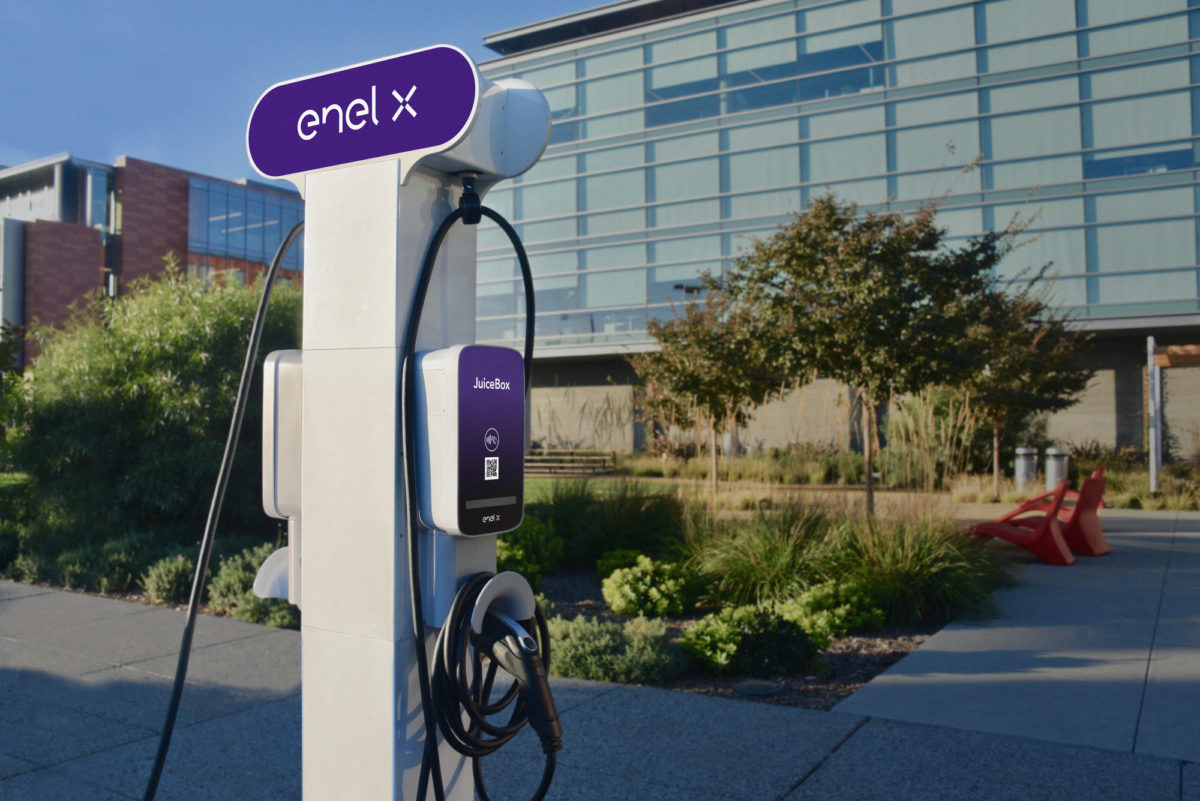Some electric vehicle owners automatically charge their vehicles when solar or wind generation is the highest and grid emissions are lowest, by using a Juicebox charger from demand response provider Enel X, or a rare Juicenet-enabled charger. EV owners using these options, which Enel X has offered since 2015, receive “grid participation incentives,” according to the company’s website.
The challenge of matching EV charging with renewable generation is easily met in the windy Plains states, with plenty of nighttime wind generation. There, charging at home overnight can access emissions-free wind power. In California, however, where solar is the main source of renewable generation, an EV driven to a daytime job needs a workplace charger to recharge with solar power.
That insight comes from a study by think tank RMI, co-authored by staff of the nonprofit WattTime. WattTime provides the “grid emissions intensity” data used by JuiceBox and JuiceNet chargers, through an application programming interface (API) that is also available to other providers.
The problem for EV owners in California, and other states adding solar power, is that the US has only 10,000 workplace charging ports, while 2.35 million EVs have been sold in the US since 2010, based on government data. Most of those EVs are still in use, and are typically charged at home.
For grids with “significant daytime solar,” the answer is to accelerate workplace charging programs, says the study, and offer low-cost daytime charging for employees.
For “wind-heavy grids” with increased wind generation overnight, the study notes that electric trucks and buses could be charged overnight at a centralized depot.
To maximize the flexibility of EVs as a grid asset, the study recommends high-power Level 2 charging with longer “dwell times,” or the amount of time a vehicle is parked at a charger. That could maximize EV use of renewable generation that would otherwise be curtailed at times when generation exceeds consumption.
Utilities should incorporate the grid flexibility resource from EVs at the planning stage, the study says, which means utilities must “modernize” the integrated resource planning process.
A transition to EVs was found to yield a 90% clean grid at lower electricity costs than one without EVs, in a UC Berkeley study last year. That’s partly because transmission investments would mainly be for spur lines to new renewable generation.
While the WattTime approach uses real-time emissions data to guide EV charging, an alternative approach would use real-time pricing data for managing the timing of electric vehicle charging, and other electricity use. A real-time pricing approach has been proven to work in a California pilot program.
The RMI study includes a comparison of the resource types used for generation, such as solar and wind, in each of five major grid operators in the US: PJM, CAISO, SPP, ERCOT and NYISO. The opportunities for charging EVs with renewables is greatest in regions with the highest renewables contribution, the study said.
This content is protected by copyright and may not be reused. If you want to cooperate with us and would like to reuse some of our content, please contact: editors@pv-magazine.com.








By submitting this form you agree to pv magazine using your data for the purposes of publishing your comment.
Your personal data will only be disclosed or otherwise transmitted to third parties for the purposes of spam filtering or if this is necessary for technical maintenance of the website. Any other transfer to third parties will not take place unless this is justified on the basis of applicable data protection regulations or if pv magazine is legally obliged to do so.
You may revoke this consent at any time with effect for the future, in which case your personal data will be deleted immediately. Otherwise, your data will be deleted if pv magazine has processed your request or the purpose of data storage is fulfilled.
Further information on data privacy can be found in our Data Protection Policy.